Meet your dog's relatives
Digging into long pedigree lists sparks fascination. The Breed Archive allows you to drill down into your dog's pedigree, follow it over many generations back to his ancient relatives and - if data is available - back to the very roots of the breed. The Breed Archive offers you further possibilities to learn more about (the history of) your dog and we'll explain them in detail in this article. All examples are taken from US CH Delacreme de la Renta from the Whippet Breed Archive.
Pedigree
The pedigree on a dog's profile page is one of the most important features in The Breed Archive - the standard view allows you to follow it over up to five generations. This makes it really easy to dig deeper and deeper and follow designated lines in the pedigree.
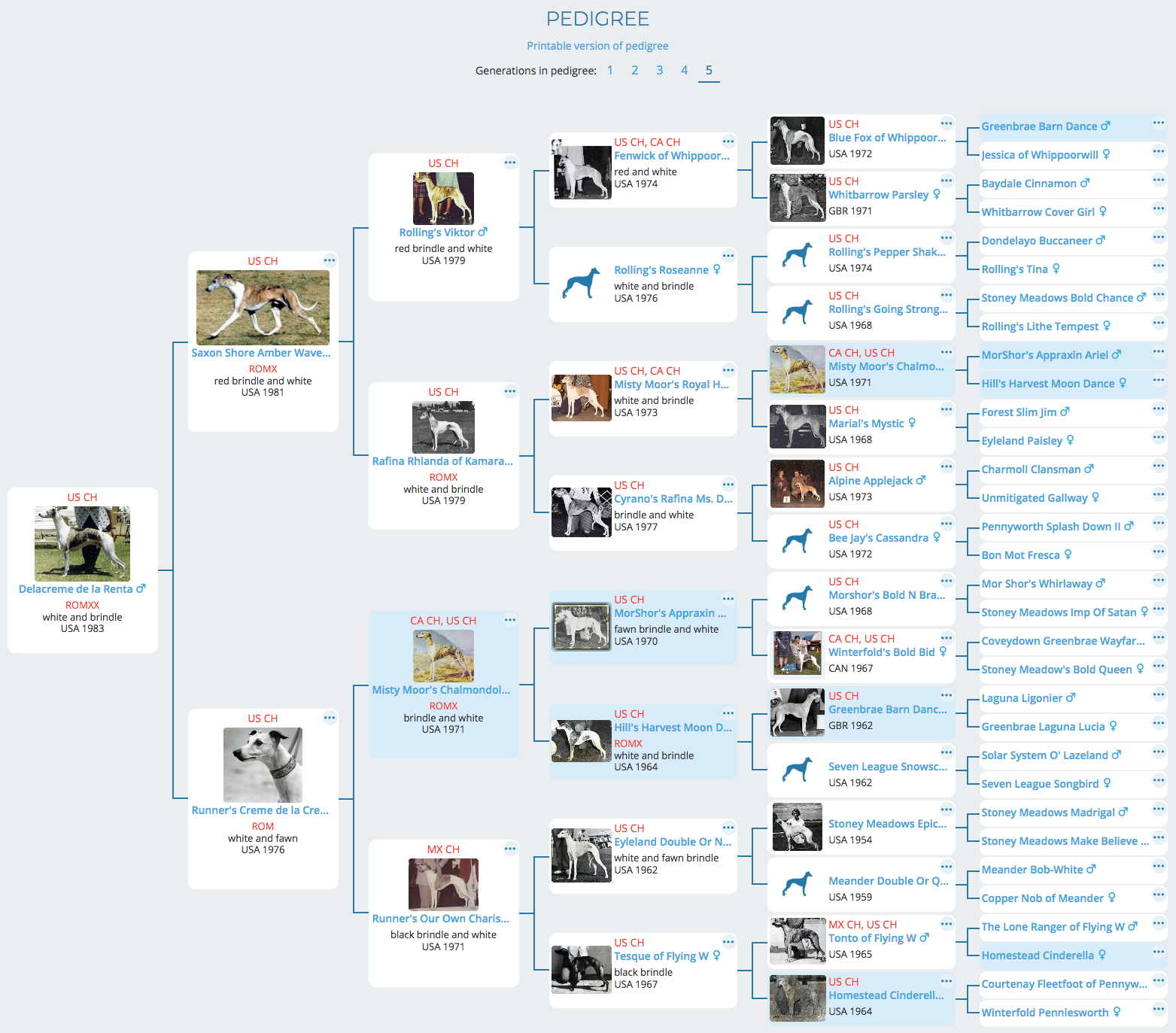
You might recognise a difference in the presentation of the ancestors - some are highlighted with blue background colour. This highlighting indicates that the animal occurs multiple times within the present pedigree.
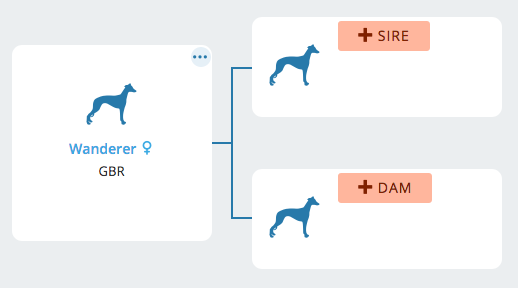
From time to time you might browse a pedigree and discover dead ends. Such missing ancestors in the pedigree are clearly recognizable and you can directly add missing dogs right to the pedigree itself. Embark on a journey of discovery: it’s particularly rewarding when you can add a missing ancestor and a whole new branch opens up.
Besides the standard pedigree view there is another, more compact, visualisation: the printable version of the pedigree. Follow the link in the standard view to be able to display up to nine generations in tabular format. If you like a printed document, the pre-selected three generations (up to the great-grandparents) without pictures fit on a letter format page in landscape mode.
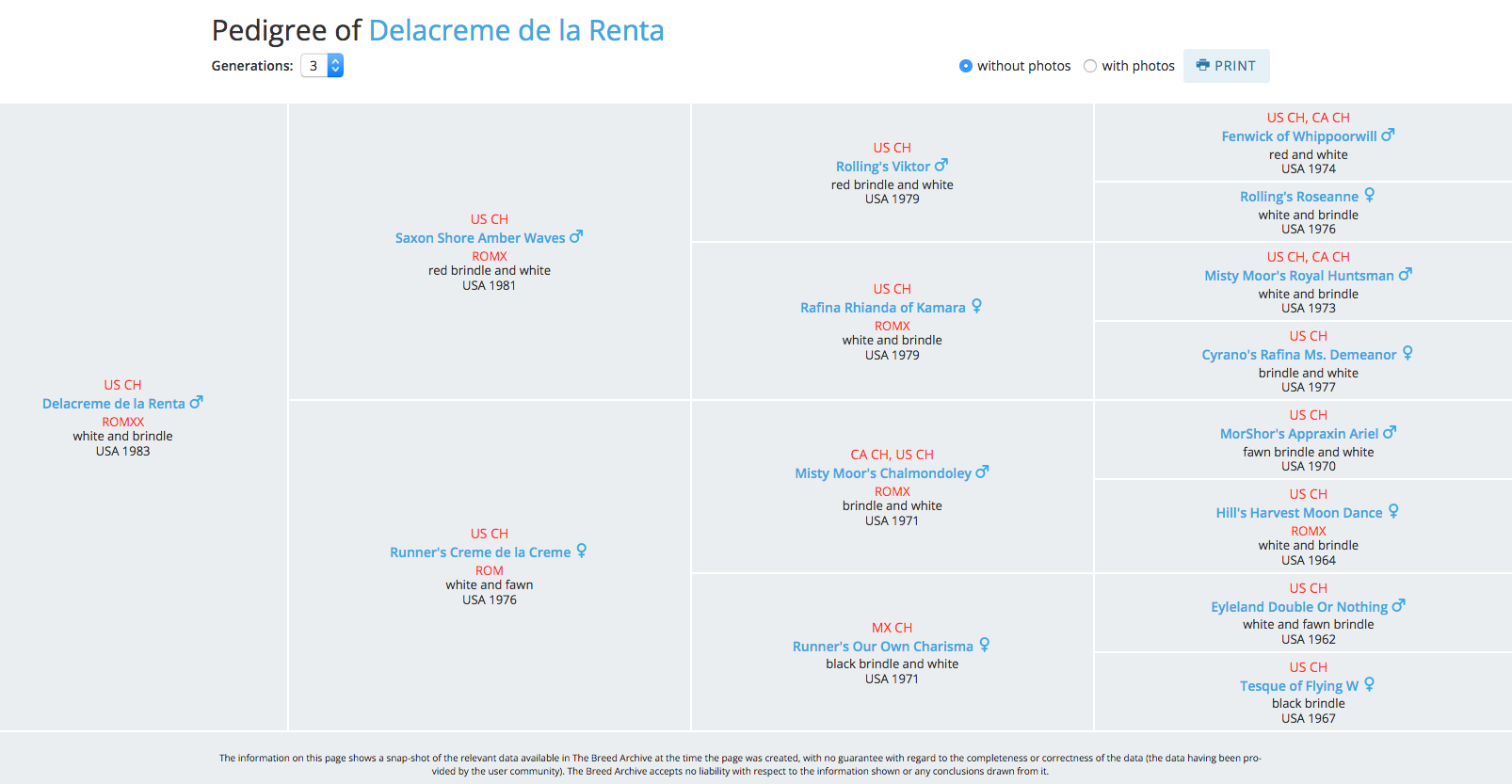
Additional features for subscribers
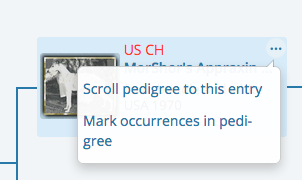
The pedigree offers two extra features for subscribers, both of them accessible via the small context menu button of each dog's profile:
- scroll the pedigree without losing focus of the current dog
- mark multiple occurrences of a specific dog in the pedigree. That's useful to focus on repeated usage of a designated dog.
By scrolling the pedigree you can't get lost on the pedigree path you observe. All reference points of previous generations are still visible and you can directly scroll to each of the entries.

Reverse Pedigree
A reverse pedigree allows you to follow the descendants of a particular dog over several generations. It provides links between generations as you cannot only see direct offspring but also grandchildren, great-grandchildren, etc of a dog. You can figure out which mates have been used in breeding and where and when branches came to an end.
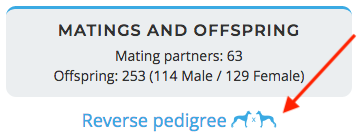
For every dog with descendants, you will find the link "Reverse pedigree" on its profile page. This feature guarantees fun while diving into the genealogy of your favourite dogs!
The reverse pedigree page is organised as a list to click through. In case of ancestors with a limited amount of descendants, the total number of progeny is shown. In these cases you can expand the whole list to show all descendants at once. However, you can always choose the exploratory method and follow up each litter and load further descendants dynamically.
Each mating is shown with the mating partner and litter size (offspring of unknown mating partners is bundled into one entry as in our example). You can drill down to explore litter after litter. If you detect a dog that you want to inspect further you can use the options from the context menu:
- regain focus on the entry by collapsing all underlying paths
- if available, show the reverse pedigree in a new tab
- open the detail page of the entry in a new tab
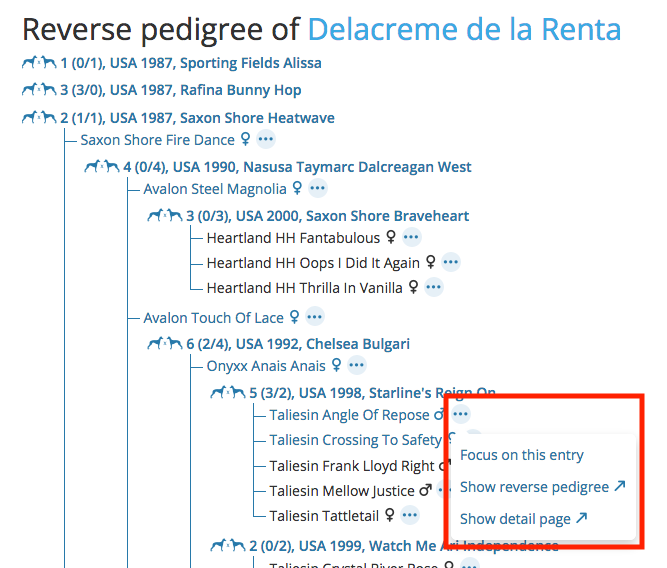
Additional feature for subscribers
With popular sires or progenitors of the breed, a huge number of descendants can accumulate over the generations. Every user can drill down to a certain depth into the descendants of a particular dog. For most users this will be perfectly sufficient. But for people who want to follow the descendants over very many generations, we also offer that with a subscription. Subscribers face no limits in following all available routes.
Pedigree Analysis
Surely, you’ve already heard of the Coefficient of Inbreeding (COI) (or Inbreeding Coefficient (IC)) of an animal. The COI is the standard measure for the level of inbreeding which indicates how closely related the ancestors of a particular dog are across the sire and dam lines.
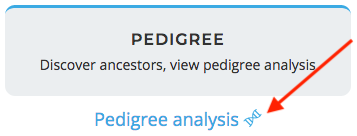
The Breed Archive takes into account seven generations for its default calculation using the tabular method. To get further insights besides the calculated Coefficient of Inbreeding you can perform a detailed pedigree analysis on every dog. Follow up on the link "Pedigree analysis" on the dog's profile page as there is a lot to discover and analyse:
- Choose between 1-10 generations for COI calculation. The calculation of the inbreeding coefficient is done up to a given pedigree depth (number of generations); the greater the depth of the pedigree, the greater the chance of finding new common ancestors, and the higher the inbreeding coefficient.
- Find out about ancestor loss, maximum ancestors, and actual ancestors. The ancestor loss is calculated by comparing the number of possible ancestors in a pedigree with the actual number of different ancestors.
- Discover blood quota, which is the calculated percentage of a pedigree that is made up by any one ancestor. Sire and dam, obviously, each make up 50% of a pedigree; grandsires and granddams 25%; great-grandparents contribute 12.5%, etc.
- Analyse the partial COI contributions and the number of occurrences of individual ancestors within the generations. Please note that the partial COI calculation is available only up to the 5th generation as computational requirements are too high for larger pedigrees.
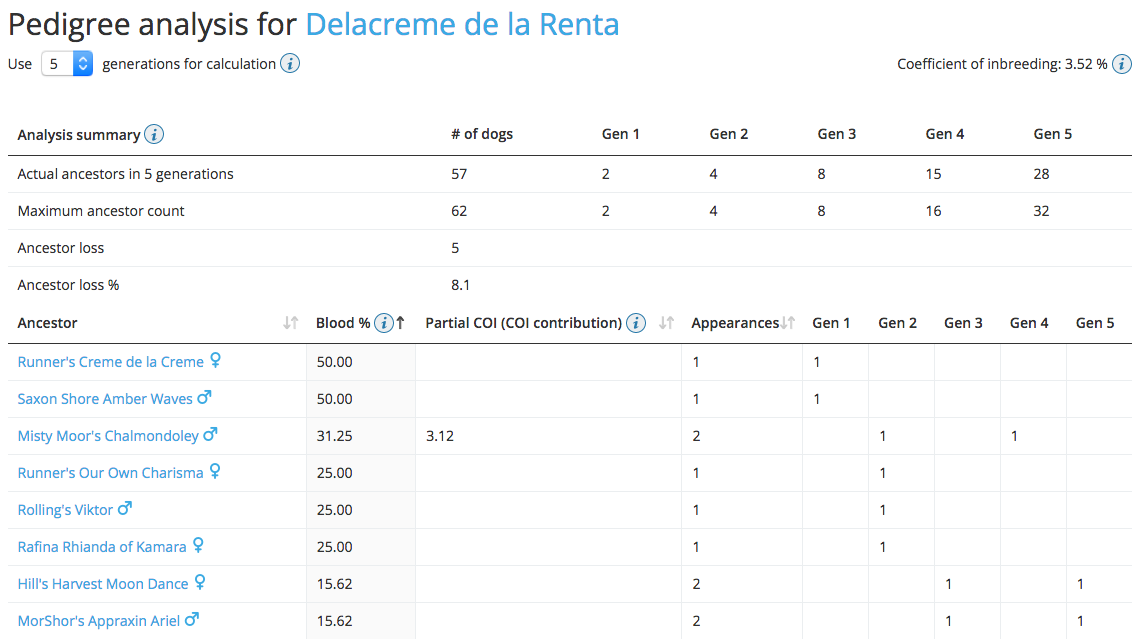
If you want to know more about COI, partial COI, ancestor loss and blood quota read our article about the importance of pedigree analysis in breeding.